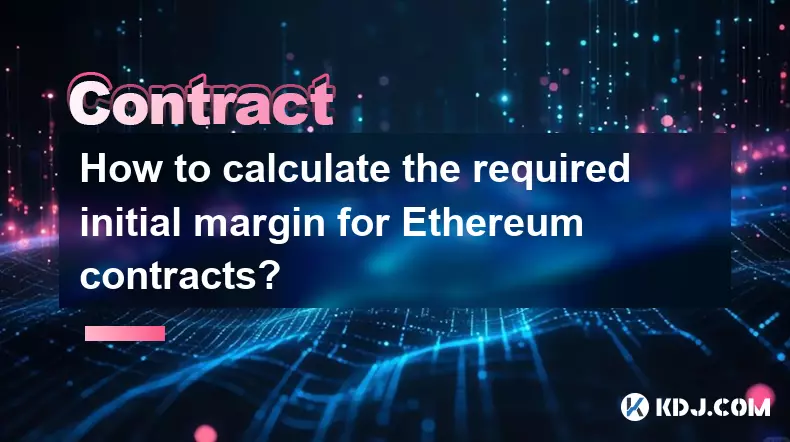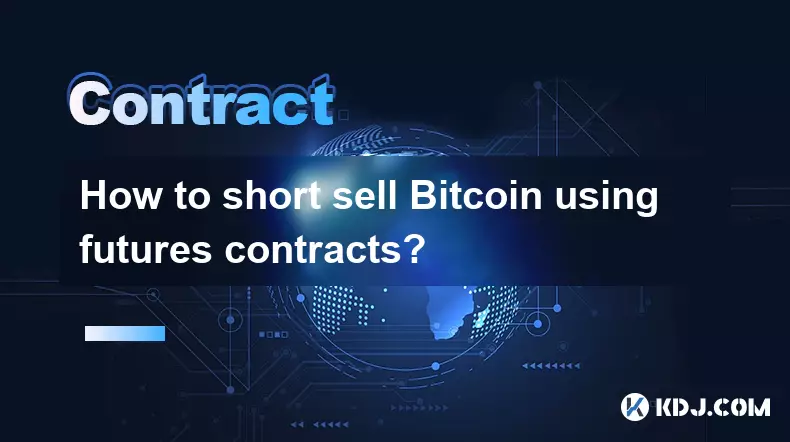-
 bitcoin
bitcoin $118548.520763 USD
3.67% -
 ethereum
ethereum $4352.564943 USD
4.79% -
 xrp
xrp $2.964058 USD
4.22% -
 tether
tether $1.000565 USD
0.05% -
 bnb
bnb $1028.372955 USD
1.46% -
 solana
solana $221.373507 USD
6.00% -
 usd-coin
usd-coin $0.999933 USD
0.02% -
 dogecoin
dogecoin $0.248633 USD
6.85% -
 tron
tron $0.341444 USD
2.38% -
 cardano
cardano $0.852946 USD
5.82% -
 hyperliquid
hyperliquid $47.869306 USD
6.15% -
 chainlink
chainlink $22.561476 USD
6.01% -
 ethena-usde
ethena-usde $1.001258 USD
0.05% -
 avalanche
avalanche $30.660000 USD
2.06% -
 stellar
stellar $0.400917 USD
9.76%
Where can I view the long/short position ratio in Solana contracts?
Long/short ratios on Solana reflect trader sentiment in derivatives markets, with platforms like Drift and Mango Markets offering real-time analytics via APIs or dashboards.
Sep 30, 2025 at 11:18 am

Understanding Long/Short Ratios in Solana-Based Derivatives
1. The long/short position ratio reflects the proportion of traders betting on price increases versus those anticipating declines within a specific market. In the context of Solana-based smart contracts, this data is not stored directly on-chain due to gas and scalability constraints. Instead, decentralized derivatives platforms built on Solana aggregate user positions off-chain and publish summarized metrics through their frontends or APIs.
2. To access this information, users typically interact with decentralized finance (DeFi) applications that offer perpetual futures or options trading. These protocols maintain internal databases synchronized with on-chain events such as position openings, liquidations, and margin adjustments. The derived long/short ratios are then displayed in real time on their dashboards.
3. Platforms like Drift Protocol and Mango Markets provide live analytics including long/short ratios for various assets traded against SOL or USDC. These interfaces pull data from their backend systems, which continuously monitor wallet activities and open interest across different markets. Users can navigate to the 'Markets' or 'Analytics' section to view current sentiment indicators.
4. Some third-party analytics tools have also emerged to track Solana DeFi activity comprehensively. Websites such as DexScreener and Step Finance integrate with multiple protocols to present consolidated views of trader behavior. They often include visualizations of long/short imbalances over time, helping identify potential market turning points.
5. It's important to note that these ratios may vary between platforms depending on their user base and incentive structures. A high concentration of long positions on one exchange does not necessarily reflect overall market sentiment across the entire Solana ecosystem.
Data Sources Accessible Through API Endpoints
1. Developers and advanced traders can retrieve long/short position data programmatically using public REST or GraphQL APIs offered by Solana-native derivatives platforms. For example, Drift Protocol exposes endpoints under its official documentation that return aggregated open interest segmented by direction.
2. Querying such APIs requires forming HTTP requests with specific parameters, such as the asset symbol (e.g., BTC/SOL) and timeframe. Responses usually come in JSON format containing fields like total_long_positions, total_short_positions, and timestamped ratios.
3. Third-party services like Flipside Crypto and Dune Analytics allow SQL-based querying of blockchain data, enabling custom computation of long/short ratios based on transaction patterns. By analyzing deposits, leverage usage, and order book states, it’s possible to infer directional bias even without direct access to platform-specific databases.
4. WebSocket streams are another method for obtaining real-time updates. Certain platforms support persistent connections that push updated ratio values whenever significant shifts occur in open interest distribution. This approach benefits algorithmic strategies relying on rapid detection of sentiment changes.
5. When utilizing external APIs, rate limits and authentication requirements must be considered. Most providers require API keys for tracking usage and preventing abuse, especially for high-frequency access scenarios.
On-Chain Indicators That Reflect Positioning Trends
1. While explicit long/short ratios aren't encoded in Solana transactions, certain on-chain signals correlate strongly with positioning behavior. Open interest growth measured through cumulative collateral locked in perp markets serves as a proxy for increasing participation.
2. Liquidation clusters identified via event logs can indicate where large groups of leveraged positions were terminated. Sudden spikes in liquidations often precede sharp reversals, suggesting an imbalance in prior long or short dominance.
3. Funding rates published periodically by perp protocols reflect the cost of maintaining leveraged positions. Positive funding indicates more longs than shorts, requiring longs to pay shorts; negative values suggest the opposite dynamic. These rates are recorded on-chain and accessible via program logs.
4. Wallet clustering techniques help map relationships between addresses engaging in similar trading patterns. By grouping entities that repeatedly open positions simultaneously, analysts can estimate institutional vs. retail influence on directional bets.
5. Transaction volume weighted by leverage level provides insight into whether aggressive or conservative strategies dominate the market. High-leverage trades amplify the impact of individual positions on overall sentiment, making them critical inputs when approximating effective long/short exposure.
Frequently Asked Questions
How do I verify the accuracy of long/short ratios shown on a Solana DApp?Cross-reference the displayed figures with independent analytics platforms like Nansen or Birdeye. Compare timestamps and asset pairs to ensure consistency. Discrepancies might arise from differing calculation methodologies or delayed data synchronization.
Are long/short ratios available for all tokens listed on Solana?No, only assets with active derivatives markets have meaningful long/short data. Low-volume or newly launched tokens may lack sufficient open interest for reliable ratio calculations. Check if the token is supported on major perp platforms before expecting such metrics.
Can bots manipulate long/short ratios to mislead other traders?Yes, coordinated actors can temporarily skew ratios by opening large opposing positions and quickly closing them. This form of spoofing aims to trigger herd behavior. Always combine ratio analysis with volume trends and on-chain fundamentals to reduce susceptibility to manipulation.
Do centralized exchanges affect Solana’s long/short dynamics?Indirectly. While Binance or Bybit don’t operate on Solana, their pricing and sentiment influence cross-chain capital flows. Traders arbitraging between centralized and decentralized venues may shift positioning on Solana platforms in response to global market moves.
Disclaimer:info@kdj.com
The information provided is not trading advice. kdj.com does not assume any responsibility for any investments made based on the information provided in this article. Cryptocurrencies are highly volatile and it is highly recommended that you invest with caution after thorough research!
If you believe that the content used on this website infringes your copyright, please contact us immediately (info@kdj.com) and we will delete it promptly.
- BlockDAG, DOGE, HYPE Sponsorship: Crypto Trends Shaping 2025
- 2025-10-01 00:25:13
- Deutsche Börse and Circle: A StableCoin Adoption Powerhouse in Europe
- 2025-10-01 00:25:13
- BlockDAG's Presale Buzz: Is It the Crypto to Watch in October 2025?
- 2025-10-01 00:30:13
- Bitcoin, Crypto, and IQ: When Genius Meets Digital Gold?
- 2025-10-01 00:30:13
- Stablecoins, American Innovation, and Wallet Tokens: The Next Frontier
- 2025-10-01 00:35:12
- NBU, Coins, and Crypto in Ukraine: A New Yorker's Take
- 2025-10-01 00:45:14
Related knowledge

What is the maintenance margin for Bitcoin contracts?
Oct 02,2025 at 01:36am
Decentralized Exchanges Gain Momentum in 20241. Decentralized exchanges (DEXs) have seen a significant rise in trading volume, surpassing centralized ...

How to calculate the required initial margin for Ethereum contracts?
Oct 01,2025 at 06:01am
Understanding Initial Margin in Ethereum Futures1. The initial margin for Ethereum futures contracts represents the minimum amount of capital a trader...

What is a perpetual swap for Bitcoin contracts?
Oct 01,2025 at 08:18am
Understanding Perpetual Swaps in Bitcoin Trading1. A perpetual swap is a type of derivative contract that allows traders to speculate on the price of ...

What is the best platform for trading SOL contracts?
Oct 01,2025 at 06:36am
Understanding the Role of Decentralized Exchanges in Modern Crypto Trading1. Decentralized exchanges (DEXs) have reshaped how traders interact with di...

How to short sell Bitcoin using futures contracts?
Oct 01,2025 at 02:54am
Understanding the Role of Decentralized Exchanges in Crypto Trading1. Decentralized exchanges (DEXs) have become a cornerstone of the cryptocurrency e...

Are PEPE contracts a good way to trade volatility?
Oct 01,2025 at 04:18am
Understanding PEPE Contracts in the Cryptocurrency Market1. PEPE contracts, derived from the broader meme coin movement, have gained attention due to ...

What is the maintenance margin for Bitcoin contracts?
Oct 02,2025 at 01:36am
Decentralized Exchanges Gain Momentum in 20241. Decentralized exchanges (DEXs) have seen a significant rise in trading volume, surpassing centralized ...

How to calculate the required initial margin for Ethereum contracts?
Oct 01,2025 at 06:01am
Understanding Initial Margin in Ethereum Futures1. The initial margin for Ethereum futures contracts represents the minimum amount of capital a trader...

What is a perpetual swap for Bitcoin contracts?
Oct 01,2025 at 08:18am
Understanding Perpetual Swaps in Bitcoin Trading1. A perpetual swap is a type of derivative contract that allows traders to speculate on the price of ...

What is the best platform for trading SOL contracts?
Oct 01,2025 at 06:36am
Understanding the Role of Decentralized Exchanges in Modern Crypto Trading1. Decentralized exchanges (DEXs) have reshaped how traders interact with di...

How to short sell Bitcoin using futures contracts?
Oct 01,2025 at 02:54am
Understanding the Role of Decentralized Exchanges in Crypto Trading1. Decentralized exchanges (DEXs) have become a cornerstone of the cryptocurrency e...

Are PEPE contracts a good way to trade volatility?
Oct 01,2025 at 04:18am
Understanding PEPE Contracts in the Cryptocurrency Market1. PEPE contracts, derived from the broader meme coin movement, have gained attention due to ...
See all articles










































































